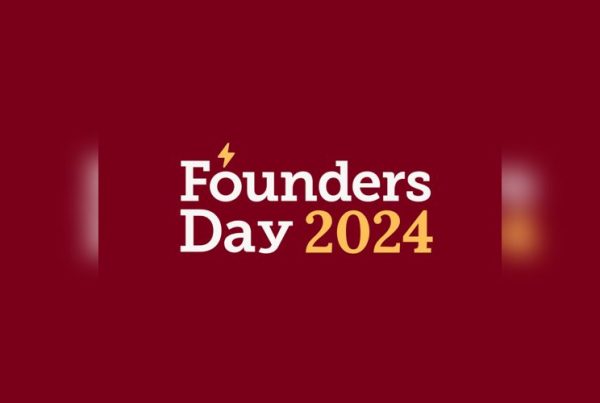What do you do?
 I serve as the Associate Director for Welcome Week and First-Year Programs in Orientation & First-Year Programs at the University of Minnesota – Twin Cities. In this role, I am responsible for the development, coordination, and implementation of Welcome Week.
I serve as the Associate Director for Welcome Week and First-Year Programs in Orientation & First-Year Programs at the University of Minnesota – Twin Cities. In this role, I am responsible for the development, coordination, and implementation of Welcome Week.
Welcome Week is a program for new students that helps them get acclimated to campus prior to the start of the semester. As you can imagine, coordinating a program to introduce a complex institution like the U of M to over 5,800 students each fall includes many details and takes some organization! There are over 20 different anchor events where we track student attendance. These events take place in numerous locations across campus and involve over 40 campus departments and colleges.
What tools/software/hardware/etc do you use to do your work?
Personal Organization
The main tool I use to organize my work is Wunderlist. This task management tool can be used across many devices – I use it on my laptop and phone. I often have many lists running at once and Wunderlist helps me keep those lists organized and in one location. I primarily use it to track agenda items I have for standing meetings and 1-1’s with colleagues. Each colleague/meeting gets their own list. Every time I remember something I need to speak with them about or have an agenda item for a meeting, I add it to the list. It’s perfect for when those random thoughts pop into my head (usually on a weekend while at the grocery store!). I can dump my thought to a list via my phone and not have to keep it in my memory.
Wunderlist allows me to prioritize the items within a list with a star, take notes on each individual list item and share lists with another person. It also tracks completed items so I have access to them even after they are done. While I don’t use this tool to its fullest potential, using these basic features helps me keep track of what has been discussed in previous meetings, decisions that were made/where they were left off, move items to my own personal to-do list or add items to another person’s list. My agenda is always ready for any meeting!
Event Organization
Kara Zwieg, Assistant Director for Welcome Week First-Year Programs & External Relations, and I are the key points of contact for every Welcome Week event. We work in collaboration with two student program coordinators and an assistant director for leadership training & development. All together, the five of us make up the Welcome Week team within OFYP. Kara introduced the idea of event planning docs within Google Drive to organize our notes for each meeting and it has been key to our communication and efficiency in planning! There are so many moving parts with a program as large as Welcome Week, here is how we’ve made google docs work for us:
Each Welcome Week event gets its own google doc. Within each doc, we have a framework that maps out planning for the year:
- Debrief. We debrief with event committees each fall to document what went well and what improvements need to be made for the following year.
- Feedback Analysis. In this section, we try to capture key feedback from our program evaluation so that it can be integrated into the debrief and planning conversations.
- Planning. This section allows for ideas and notes throughout the planning process.
- Training. This area is great to capture ideas to train staff and the actual staffing needs through the planning process
- Pass off Meeting. Welcome Week requires all hands-on deck so some events get handed over to another staff member to implement and this area allows us to track key things they would need to know
We try not to care too much about formatting in these documents so they don’t always look really pretty, but in general they give the whole team access to every event. Often times things will come up in an event planning meeting that affects another event in some way (logistics, staffing, content, key messages, etc). Having access to these documents allow us to communicate ideas, thoughts, and issues for other events for which we may not be the lead. It has cut down on the number of in-person interruptions in the office, loose post-its floating around, helps us integrate feedback from students more intentionally and keep us on track in properly training our staff to implement the events. These documents are then the source for all the content that goes into instructional guides that are given to our Orientation Leaders and Welcome Week Leaders.
Program Implementation
Excel is central to implementing Welcome Week! I don’t use it in the traditional sort of way with math equations, formulas and charts, I use it to organize major components and details for the Welcome Week Program. I’m guilty of creating spreadsheets for everything — mapping information out in charts for me is easier to read, digest and understand. It is at times very overwhelming for others to take in — I can cram a lot of information into a spreadsheet! But I’ve found it’s the easiest way to ensure folks are on the same page as it relates to a complex and layered program that requires many details in order to see the big picture come together. Here are a few examples of how I have used Excel to organize the Welcome Week program.
Personal Schedules
Every new student receives a personalized schedule when they check in for Welcome Week — this means that there are over 5,800 unique schedules printed. The schedule itself is essentially a large mail merge and therefore we need to organize data to be uploaded to our database. Each row represents one group and each column represents a specific assignment for that group — for instance their meeting room location, what time they should arrive for specific events, etc. There are 240+ Welcome Week groups so it is definitely overwhelming to take in at first glance. It, however, has been an incredible resource for staff to have on hand so they can support students who get disconnected from their group mid-week or lose their personal schedule. One can identify the assigned group and look across the entire row to find out where the group should be on a given day.
Rotation Schedules
U of M Day during Welcome Week is a day that all students travel between banks of campus. There is programming that takes place on the East Bank, West Bank, and St. Paul Campus. Excel is used to organize the rotation schedules to demonstrate how students are moving from campus to campus and to help us figure out how many students are scheduled for an event at any given time. Each column represents one rotation schedule (time is indicated in far left column) and the colors refer to the bank/campus and event scheduled. Welcome Week groups are then assigned to a rotation schedule. This chart is shared with our campus partners who have events this day so they can be aware of what the student traffic will be for their program. Additionally, the schedule itself is translated into the spreadsheet mentioned above that informs a new student’s personal schedule they receive when they check in for Welcome Week.
Transit Schedules
We work with well over 100 buses (60+ just for the Mall of America trip alone!) throughout the Welcome Week program to get students where they need to go. Clearly communicating our needs to the bus company and maximizing the hours we contract buses is important. This chart maps out the number of buses needed (top row) and their purpose (second row). The time (far left column) then shares what route each individual bus should be following. Each column then can be translated into an itinerary for the bus company and allow us to see a big picture plan for the day.
What do you use that you love? What do you use that you wish worked better?
I love the ease of Wunderlist, the collaboration of Google Docs and ability to manage details in Excel. While Google Docs has worked wonders for collaborating on events, it is clunky to ensure you have web access all the time at meetings and in general my Drive is a complete mess of documents that will never be organized into anything. Excel’s ability to sort, filter, merge, automatically fill cells, and color code data has been essential to keeping Welcome Week organized. While it can be tedious to format cells when creating a new master document, once it’s set up, it creates a strong foundation to organize details and provide a big picture.
A Note from the Librarian:
Jenny and all the work of Orientation and First Year Programs (OFYP) is incredible. Data management in action. We work with this amazing team to introduce new students to the collections, services, and spaces of our Libraries. One of the events we host during Welcome Week is called Academic Survival in Action. We share tips with students on surviving your first paper (like the Library Course Pages, Assignment Calculator, and Peer Research Consultants), surviving your first exam (SMART Learning Commons) and more.
We also show students how to make a grilled cheese sandwich with an iron to survive resident hall food and to highlight the Kirschner Cookbook Collection. This workflow involves 40+ leaves of bread, 20 pounds of butter and a lot of cheese. Thanks to the great work and planning around Welcome Week ± we are able to share the tools and services which will help new students succeed.




